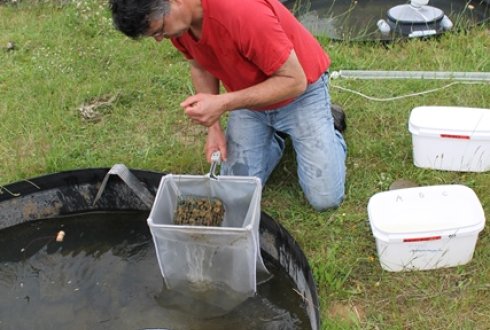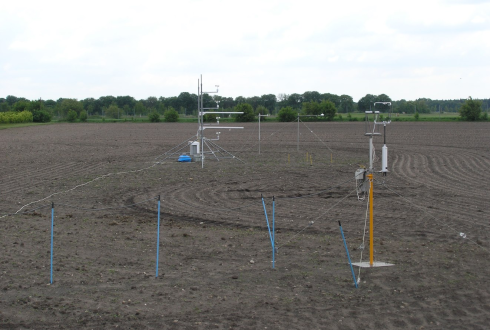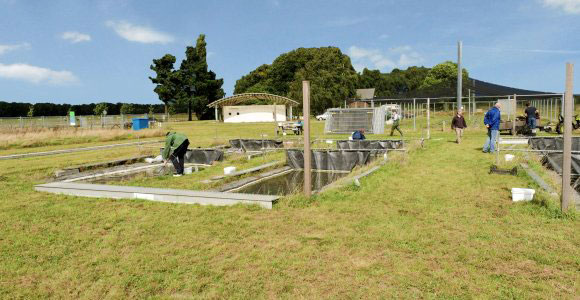
Research
Facilities are available for conducting aquatic and terrestrial research and for environmental risk assessments.
The experimental systems offer opportunities to study the behaviour and effects of a wide range of compounds in compliance with GLP. Sinderhoeve encompasses seven hectares of arable land, terrestrial microcosms and lysimeters. Also, Sinderhoeve provides possibilities for performing experiments supporting the higher tiers in risk assessment.

Aquatic Research
The experimental systems offer opportunities to study the behaviour and effects of a wide range of compounds (e.g., pesticides, biocides, PAH, PCB, metals, pharmaceuticals and veterinary drugs) in compliance with GLP. Current aquatic research at the station includes:
- Ecological effects of contaminants on communities and ecosystems. Possible endpoints of interest are: phytoplankton, macrophytes, zooplankton, macroinvertebrates, emergent insects and/or fish.
- Fate dynamics of contaminants in the environment, e.g. their behaviour in various compartments of the system and the quantification of processes affecting the dissipation and transformation of these compounds.
- Impact of nutrients on aquatic communities.
- Datasets generated in these test systems play an important role in calibrating and validating computer models.

Terrestrial research
The experimental test facility Sinderhoeve encompasses seven hectares of arable land, terrestrial microcosms and lysimeters. The thirty terrestrial microcosms have formerly been used for studies on the sorption of metals to soil.
The arable land was taken out of production in 2003 and is equipped with an irrigation system. It offers opportunities for research into crop and farming methods and ecological effects of pesticides on terrestrial communities.
The round lysimeters consist of six 3.3-metre-deep cores with a diameter of 80 cm filled with sandy soil. They were installed in 1977.

Environmental risk assessment
The ‘Sinderhoeve’ provides possibilities for performing experiments supporting the higher tiers in risk assessment. Additional single-species studies supporting the application of the Species Sensitivity Distribution concept (Tier 2) as well as model ecosystem experiments (Tier 3) can be performed. The outdoor mesocosm facilities also make it possible to perform potted plant experiments with rooted submerged and emergent macrophytes. In addition, the Sinderhoeve has options for studying the ecological characteristics of organisms, like dispersal abilities in a realistic environment. These characteristics are of vital importance for the calibration of ecological models (Tier 4).